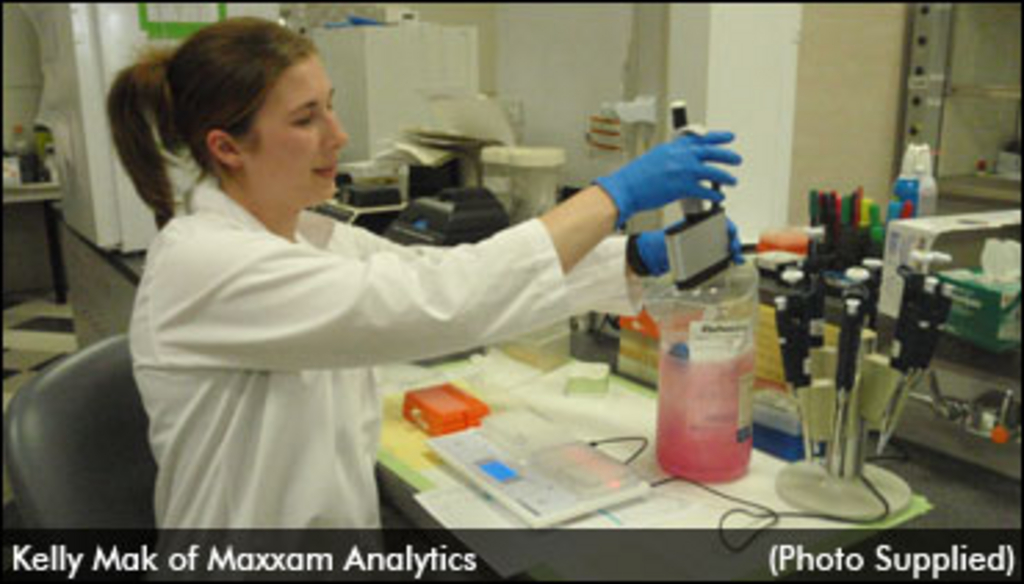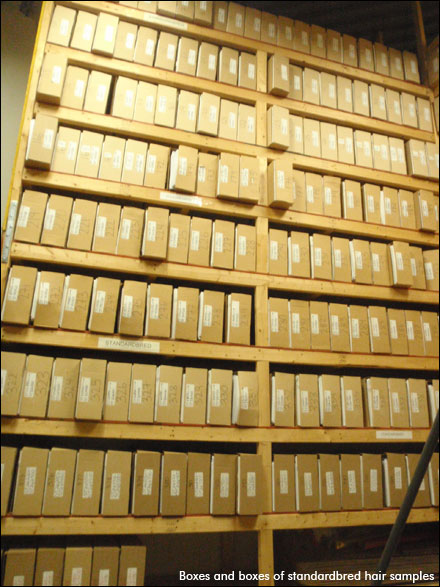
The Standardbred horse is a highly specialized breed. More than speed, talent and luck combined, the sport of harness racing relies on genetics
. The characteristics that make them great racehorses, including their athletic ability, hearty conformation and excellent temperament, are the result of decades of selective breeding. Virtually all the horses in the sport today are directly related to the champions of the past. The new speed records being constantly set at local racetracks and around the world are examples of genetics in action.
A single laboratory located in Guelph, Ont. holds the DNA records for every registered Standardbred in Canada and the United States. Maxxam Analytics is Canada’s largest analytical testing lab, with various environmental, petroleum and food microbiology testing divisions across the country. Both the animal and human DNA testing divisions are based in Guelph.
“In relation to it all, the DNA division is quite small but plays a huge part in terms of our client’s testing requirements,” said Aron Weir, Supervisor of the Animal DNA lab.
 Bloodlines play a big role in giving new generations of animals a genetic advantage, but they can also be used for identification purposes. Registering horses through genetic identification is a way to verify the parentage of each animal, similar to a birth certificate. It’s now used to track the pedigrees of many horse breeds, from Standardbreds and Thoroughbreds to Appaloosas and Paint horses. It’s a vital tool for breeders and a requirement to enter many equine sport competitions. So what’s the easiest way to provide a DNA sample from a horse? A few hairs plucked from the horse’s tail can provide all the information the lab needs.
Bloodlines play a big role in giving new generations of animals a genetic advantage, but they can also be used for identification purposes. Registering horses through genetic identification is a way to verify the parentage of each animal, similar to a birth certificate. It’s now used to track the pedigrees of many horse breeds, from Standardbreds and Thoroughbreds to Appaloosas and Paint horses. It’s a vital tool for breeders and a requirement to enter many equine sport competitions. So what’s the easiest way to provide a DNA sample from a horse? A few hairs plucked from the horse’s tail can provide all the information the lab needs.
Using a complex scientific procedure, genetic information is extracted from the hair follicles. Within in the span of a few hours, analysts are able to visually identify specific markers within the DNA itself on a computer screen.
“An individual horse will have two complete sets of DNA. One of these sets is inherited from the mother; the other set is inherited from the father.”
This unique combination is what makes genetic identification, with a certainty of 99.999%, possible. It also comes in handy when verifying parentage, in case the foals happen to get switched. This can sometimes occur at large breeding operations where many foals are being born around the same time.
“Mares might switch foals unbeknownst to the animal owner,” explained Weir.
Maxxam has genetic records for horses dating back at least two decades, kept in a humidity-controlled store room protected by a fire-suppression unit. The large room is packed wall-to-wall, floor-to-ceiling with shelves of cardboard boxes. Each box contains hundreds of hair samples belonging to a specific breed of horses. At least half the room is devoted to boxes of Standardbred hair samples - one for every racehorse in North America.
“The DNA records are also stored electronically so that in the future we can go back to that sample,” explained Weir.
The ability to use DNA tests to confirm parentage has provided a strong foundation of trust for the horse industry to build upon. In the horse racing world, different horses are more valuable than others based on their performance, so that’s why keeping track of bloodlines is so important. Breeders, owners and buyers rely on the results provided by Maxxam. And as the Standardbred breed continues to flourish in the sport of harness racing, the bloodlines of the old champions will live on in the future accomplishments of their genetic offspring.
(A Trot Insider exclusive by Hilary Eastmure)

